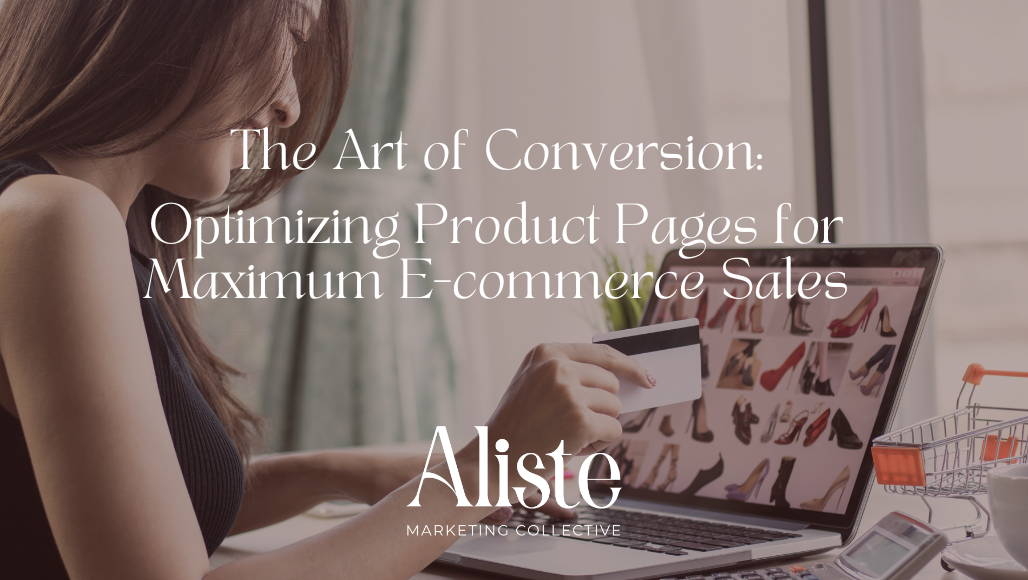As a retailer, you’re always looking for new ways to effectively engage your customers.
Now, what would you say if we told you there’s a way to alert each and every customer to a product or special offer that specifically interests them — precisely when they’re poised to make a purchase?
Well, it’s entirely possibly, thanks to a new a technology called “beacon technology.”
When used to enable proximity marketing, it can engage shoppers and encourage them to buy while simultaneously building brand awareness.
Enabling Proximity Marketing with Beacon Technology
First developed in 2013, beacon technology enables proximity-based interactions between retailers and shoppers via the Internet of Things (IoT).
The technology works by having a BLE (Bluetooth Low Energy) beacon broadcast signals that are received by nearby Bluetooth devices — in other words, shoppers’ smartphones. As a result, the beacon can determine the shoppers’ approximate location.
Proximity marketing is based on the principle that retailers can use localized wireless technology to distribute advertisements and other brand-related content to shoppers when they are close to or in their stores.
If you’re more visual, here’s how Cisco depicts beacon configuration when utilizing beacons for proximity marketing:
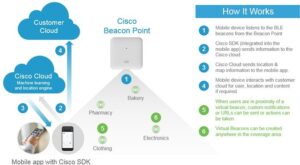
Source: Cisco
Since BLA technology is so affordable, it’s the perfect vehicle for proximity marketing.
If shoppers have downloaded a store’s app or opted in for notifications, then the beacon can communicate with them. It can use their purchase history to send them personalized push notifications about a wide range of things that would interest them specifically, from new products to special offers.
Stores that have a loyalty and rewards program can also remind shoppers how many points they have and how they can use them.

For example, when shoppers enter a furniture store where they’re members of the loyalty program, they’re immediately sent a notification with the amount of points they have. As they browse through the store, the beacons in the store send them offers that might interest them. If they purchased a couch the last time they were at the store, they receive notifications about a matching armchair and ottoman. They’re also sent alerts about similar items that are on sale. If they purchase the ottoman and leave the store, they’re sent another alert with their new points total and a coupon for a five percent discount off their next purchase.
Tapping Into New Shopping Expectations and Behaviors
Clearly, proximity marketing and beacon technology allow stores to deliver a personalized experience in a way that shoppers want to be engaged: via their phones.
According to a survey by Session M, approximately 90 percent of shoppers used their phones in brick-and-mortar stores to do everything from comparing prices to researching products and from reading online reviews to cutting coupons.
[clickToTweet tweet=”Approximately 90 percent of shoppers used their phones in brick-and-mortar stores to do everything from comparing prices to researching products and from reading online reviews to cutting coupons. #BeaconTechnology #Proximity Marketing” quote=”Approximately 90 percent of shoppers used their phones in brick-and-mortar stores to do everything from comparing prices to researching products and from reading online reviews to cutting coupons.”]
Moreover, while many shoppers view any kind of interaction that’s initiated by a sales personas a disturbance, they do want personalized marketing messages – like the kind Sephora sends, below.
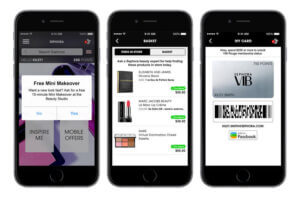
Source: Beaconstac
That’s why sending notifications to their phones with information that is likely to interest them based on their browsing or purchase history is such a brilliant way to meet shoppers’ changing expectations — as well as to tap into new shopping behaviors.
SEE ALSO: Social Commerce Trends: How to Get Sales with Social Media
A Look at the Numbers
Beacon technology is both accessible and affordable — plus, it delivers a high ROI. But you don’t have to take our word for it — just look at the following numbers:
- According to Swirl, more than 70 percent of shoppers who received beacon-driven marketing content agreed they were more likely to make a purchase in a store.
- According to Business Insider, in 2016, beacons drove around $40 billion worth of retail sales for the top 100 retailers in the U.S.
- According to Proximity Directory, proximity marketing can help small to medium-sized businesses grow their operating profits by eight percent and achieve an ROI of 365 percent.
- According to Kontakt.io, BLE beacon technology costs as much as 80 percent less than competing solutions.

Source: Kontakt.io
SEE ALSO: 11 Key Business Performance Metrics for Better Operations
Real-Life Examples
Considering the success of beacon-enabled proximity marketing, it’s no surprise that retailers large and small are using this technology. Here are a few examples of highly successful campaigns:
Elle, the well-known fashion and beauty magazine, partnered with ShopAdvisor and a number of brands — including Levis, Guess, Vince Camuto and Barnes and Noble — to implement a large proximity marketing campaign that involved 803 locations.
The campaign involved sending deals to shoppers based on their location and previous activity. For example, shoppers who had viewed the latest Guess apparel online were sent personalized alerts about deals and new items when they were close to a Guess location.
The results? Over a period of five weeks, 8.5 percent of shoppers visited a participating location. That means that the campaign performed approximately 10,000 percent better than a normal mobile advertising campaign!

Source: Proximity Studio
Retailer Nordstrom utilizes beacon technology to combine online and in-store shopping.
When a shopper who has an item in his or her online shopping cart passes by a Nordstrom store that has that item in stock, he or she receives a notification. The shopper can then decide to purchase the item in the store instead of buying it online and having to wait for it to be delivered.
This makes for an enhanced, more convenient experience and helps build customer loyalty.
Fast-food company McDonald’s used proximity marketing to build brand awareness and stronger customer relationships.

Source: Kontakt.io
It deployed beacon technology to deliver promotional coupons to users in 15 of its locations in Istanbul, Turkey, over the course of two six-week campaigns.
Every time a shopper entered a participating location, he or she received a special offer introducing them to a new product. As a result, approximately 33 percent of shoppers returned more often — increasing both customer engagement and conversion rates.
Allrecipes, one of the world’s largest online recipe sites, partnered with Marc’s to use beacon technology and proximity marketing in all 58 of its grocery stores in Ohio.
The campaign used hyper-local beacons to send shoppers recipes based on trending meal recommendations and products that were on sale. This solved two problems simultaneously for shoppers — what to cook for dinner and how to maximize their grocery budgets.
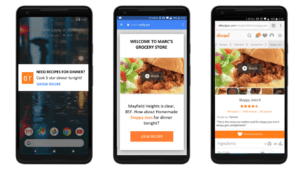
Source: Beaconstac
Instead of simply using beacon technology for promotions, jewelry brand Alex and Ani initially used it as an educational tool. During its trial period, it sent out notifications with tidbits of information about the different pieces of jewelry in the store.
Interestingly, 30 percent of shoppers who engaged with the notifications also visited the store.
Leveraging Beacon-Enabled Proximity Marketing for Your Business
 Source: indoornavigation.com
Source: indoornavigation.com
Now you know how effective beacon-enabled proximity marketing can be, you might want to leverage it for your own business.
This involves gaining a good understanding of BLE technology and how best to deploy it to meet your objectives.
You’ll also need to think about developing an app or other software that allows you to communicate with customers via your beacon. And of course, you’ll need to determine what kind of proximity campaign makes the most amount of sense for your business and your customers.
While this might seem overwhelming, a good place to start is to talk to an experienced marketing company that possesses sufficient knowledge and experience to give you solid advice and help you develop a strong campaign. Because ultimately, regardless of what technology you use to reach your customers, proximity marketing is still marketing.
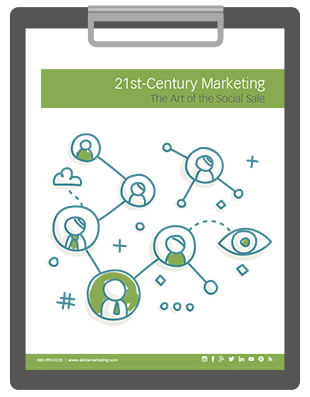
BONUS: Learn how to use social media for converting leads to sales with the art of social commerce. Download Our Guide Now!


